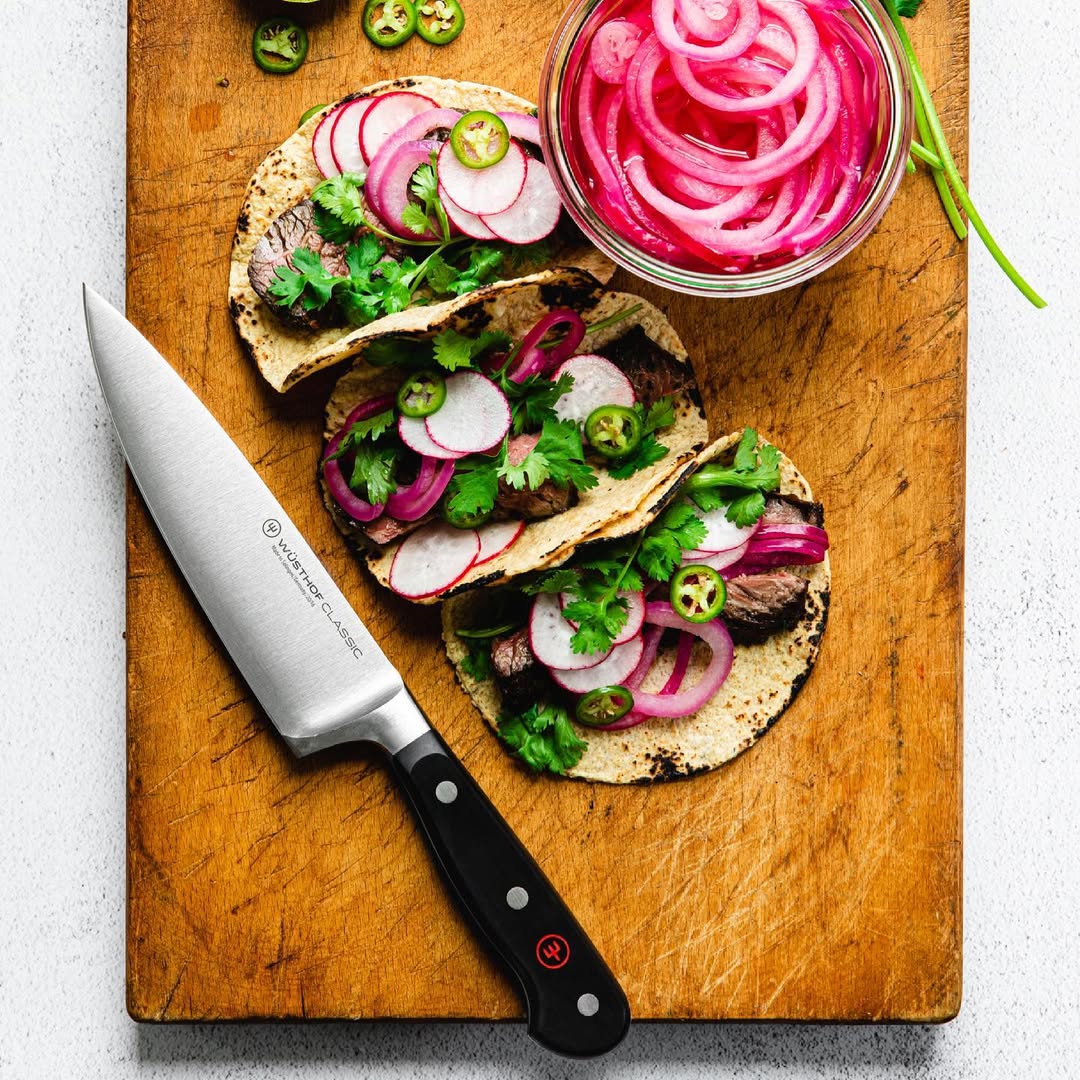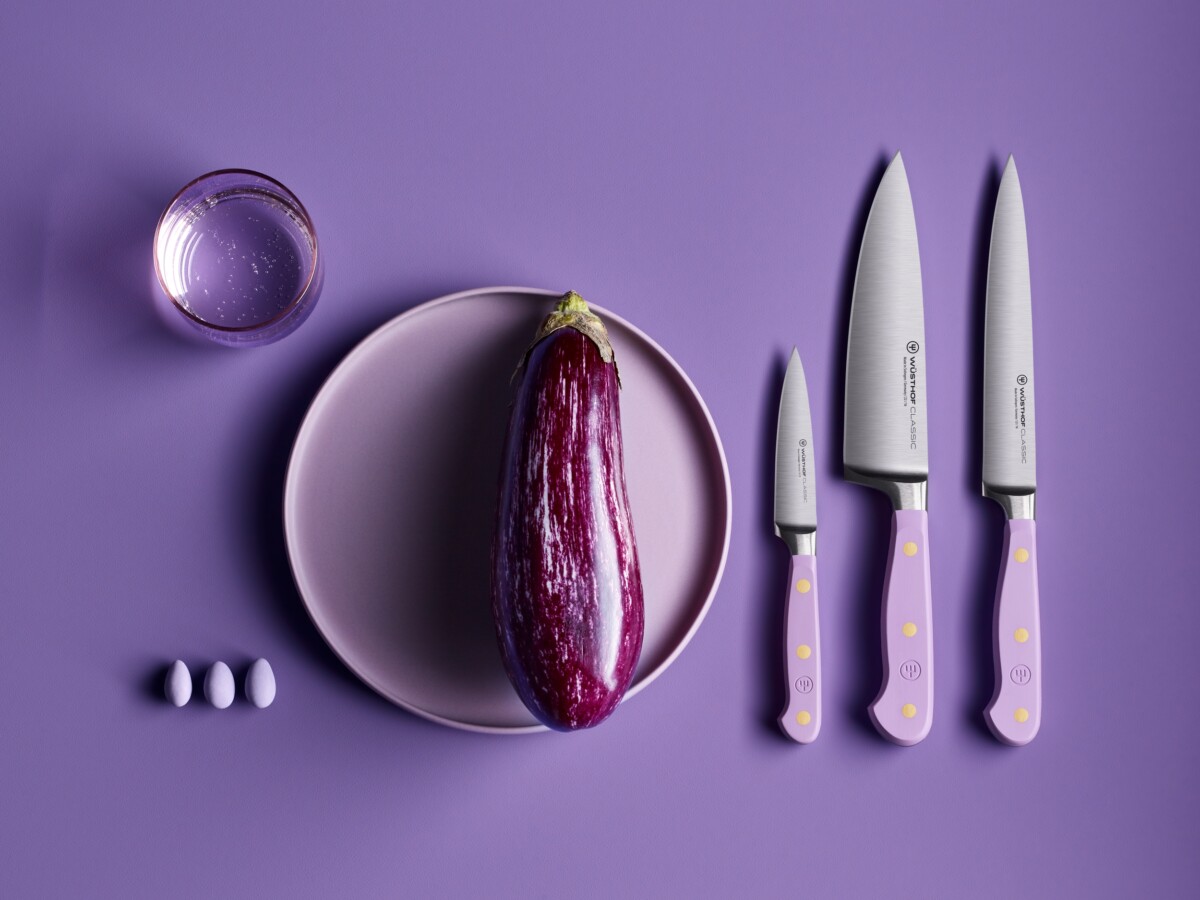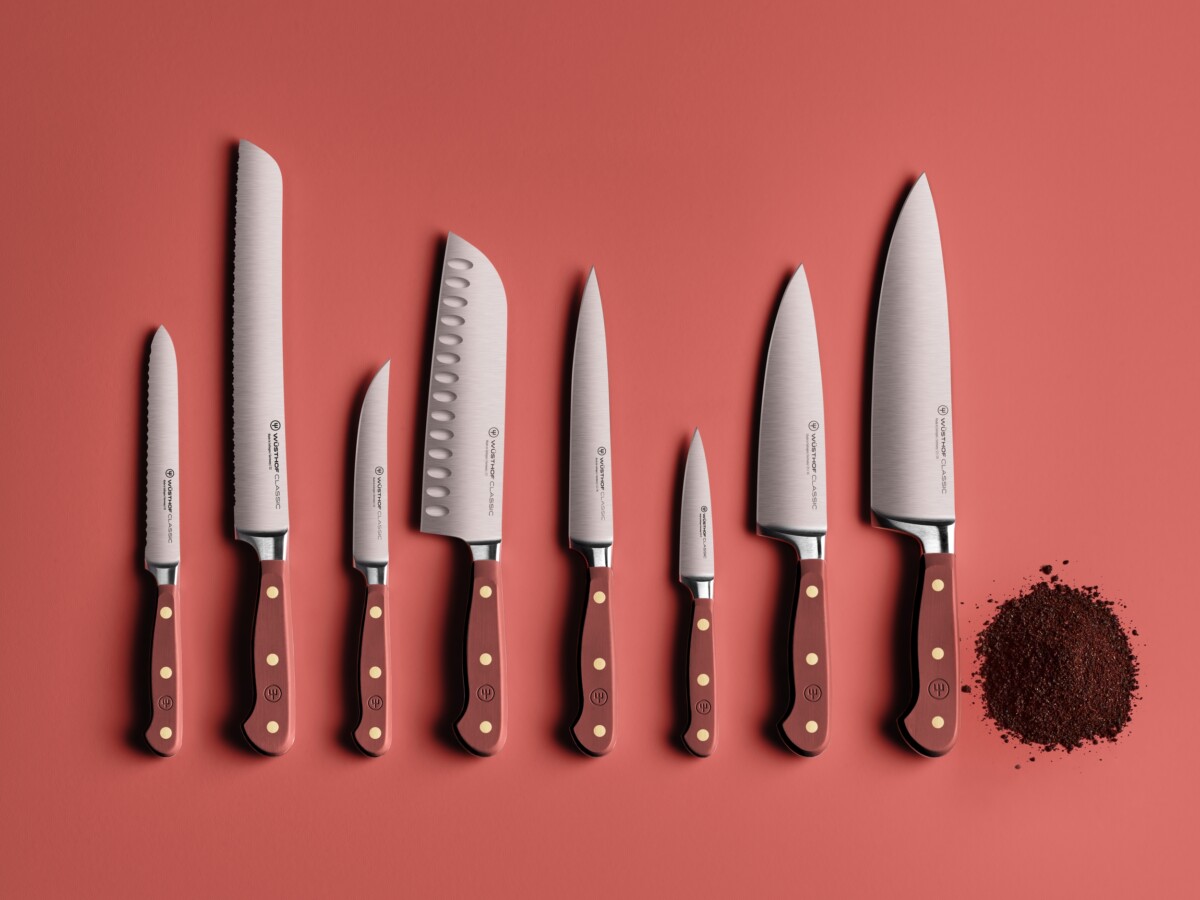By Carl Branigan, Managing Director of WÜSTHOF UK.
Choosing the right knife or set of knives is a task worth taking time over, just as you would with choosing your next car, TV or holiday! You might even experience a new-found love for cooking once you hold a knife that has perfect balance, a sharp edge or is designed for a particular task.
Ultimately, the right knife will enhance your life in the kitchen – it will make it quicker and easier to prep, chop, dice and slice, whether that’s a Caeser salad for lunch or a showstopping meal at Christmas.

How to Choose the Right Knife
The best place to start is to ask yourself the following questions – a knife finder quiz if you like! Just answering a few simple questions will point you in the right direction for the type of knife you need.
Here’s an example:
Q. What kind of tasks do you want your knife for?
A. I want a knife that does everything!
Q. How often do you cook?
A. 1-2 times a week
Q. Do you have any preferences with your knife?
A. Balanced, a good mix of weight and manoeuvrability, ergonomic and comfortable grip
Q. European or Asian? Asian knives are known for their lightweight design and straight-edge cuts, ideal for slicing and dicing. European knives feature a robust build and curved blade, perfect for rocking motions and versatile chopping tasks, and a generally considered to be easier to maintain.
A. If Asian, the suggested knife would be a Santoku with Hollow Edge – precision and comfort for every chef, used for chopping and cutting of fish, fruit, herbs, meat, sausage and vegetables. If European, then it’s a Chef’s Knife, the perfect ‘all purpose’ knife. That’s particularly good for general, everyday cooking tasks being the ‘workhorse’ of the kitchen.
So, they’re both good choices for very similar actions and ingredients. Most professional chefs make sure they have a good Chef’s knife (hence the name!) in their kitchen as it is so useful, while those working with Asian cuisines might favour a Santoku for close chopping and slicing.

Specialist Knives
There are numerous and it can be confusing! So again, the place to start is what do you need it for – and also how often are you going to use it because some of the tasks can be carried out by other ‘everyday’ knives, just specialist knives make the task easier. These include: cleavers and butcher’s knives, fish and filleting, carving, steak knives, bread knives (look for double-serrated blades which make quick work of slicing even the most awkward of artisan sourdough loaves!) and seasonal – like cheese, confectionary and peeling knives.

Knife Sets
These can come in various configurations – whether loose, blocks or rolls – in 2-, 3-, 5- or 6-piece combinations. A 3-piece set is a good starting point, with Chef’s knife, Paring knife, for mincing onions and herbs as well as cleaning and cutting small vegetables) and Utility knife, perfect for cuts of meat, fruit and larger vegetables. You can buy ready-filled knife blocks, usually with 7-11 knives and a sharpening steel or scissors. But again it is worth taking the time to think which knives you actually need and buy those to fit into a knife block you’ve bought separately.

Knife Storage
It’s vital to store your knives safely, for safety and security, but also to maintain them in excellent condition. A knife drawer organiser (usually with 15 slots) is a great choice if you don’t have much counter-top space. Or choose an upright block as that has a smaller footprint than one of the traditional angled blocks. Magnetic holders too are useful as they can be wall-mounted and are available in wood or steel to match different kitchen aesthetics.

Sharpening Knives
Believe it or not, a sharp knife is a safe knife! The most common cause of kitchen injury is actually a dull knife because it requires more pressure while cutting. By adding additional force to compensate for a dull blade, you decrease your control over the knife and increase your chance of injury. Sharp knives make for quicker work, cleaner cuts and enable you to emulate the skills of professional chefs (well, almost!).
There are different types of sharpener and, again, the choice is yours – do you feel comfortable using a honing steel or sharpening steel, hand-held knife sharpener, electric knife sharpener, or a whetstone? Typically, you should sharpen your knives regularly and frequency will depend on usage but a true kitchen knife aficionado will hone the blade, more or less, prior to using them on each occasion. Don’t worry, with the right honing steel, this takes no more than 10-15 seconds and maintains high performance at all times.
How to Use Honing and Sharpening Steels
1. Place the honing steel pointing downwards with the tip of the steel resting on a nonslip surface.
2. Begin by tilting the knife so there is a 14-degree angle between the edge of the blade and the honing steel. If sharpening an Asian styled knife, tilt the knife to a 10-degree angle.
3. Hold the angle and run the blade down the steel from the “heel” to the “tip” of the knife. Gently pull the knife towards you while gliding it downwards, ending with the tip of the knife at the bottom of the steel.
4. Place the knife on the other side of the steel and repeat the process 6-8 times while alternating sides.
While the technique for using honing steels and sharpening steels is the same, knowing when to use each of these tools will help to prolong the life of your knives. Honing realigns the microscopic teeth on the edge of the blade and prolongs your knife’s lifespan. The best way to avoid a dull blade is to maintain your blade’s edge by regularly honing your knife. Sharpening takes a small amount of steel off the blade, creating a new edge.
We recommend using a honing steel for regular maintenance and a sharpening steel when your knife needs an edge reset. Remember to always hand wash your knife after honing or sharpening to remove any excess steel from the blade and keep your knife looking its best.
About the expert
 Carl Branigan is Managing Director of WÜSTHOF UK, a premium German manufacturer of knives, with a heritage dating back over 200 years in the home of German knife production, Solingen. Carl is an accomplished commercial leader in premium consumer goods, driven by a strong ethos of connecting consumers with exceptional products.
Carl Branigan is Managing Director of WÜSTHOF UK, a premium German manufacturer of knives, with a heritage dating back over 200 years in the home of German knife production, Solingen. Carl is an accomplished commercial leader in premium consumer goods, driven by a strong ethos of connecting consumers with exceptional products.


